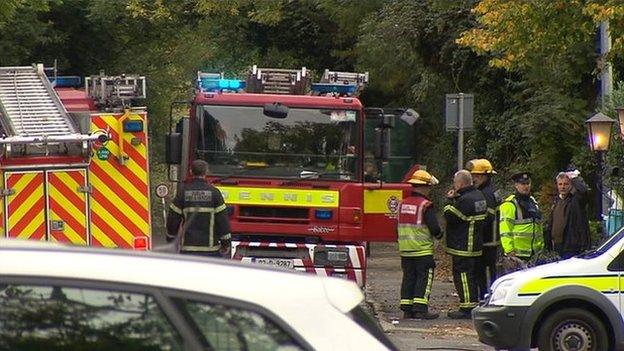Tragedy highlights poor living conditions of Ireland's travellers
- Published
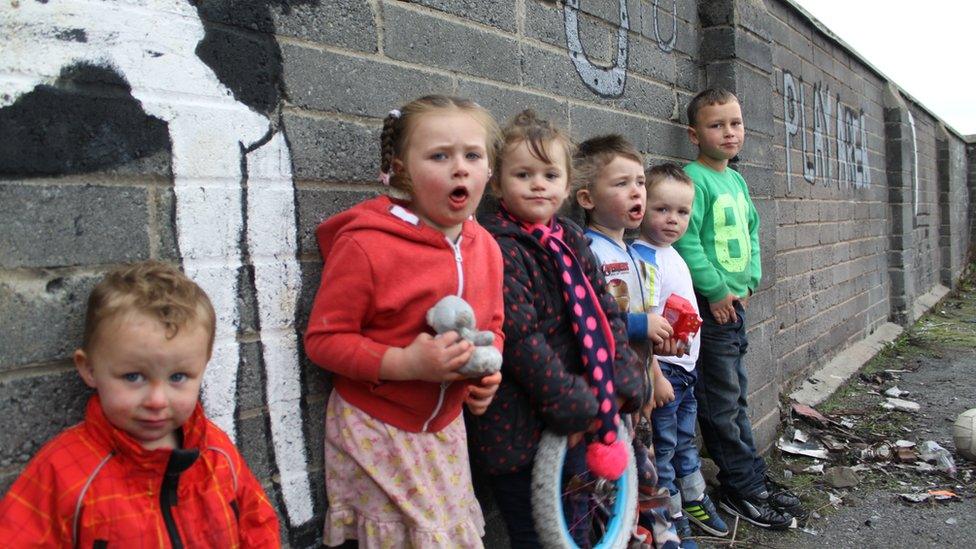
A play area for children in St Mary's is marked out only by a horse painted on a wall by council workers
Tucked away from view at the end of a lane lies St Mary's - home to around a dozen families living on a patch of rough tarmac wedged between Dublin's orbital M50 motorway and derelict ground.
On this desolate site, members of Ireland's traveller community have lived for 25 years.
The death of 10 travellers in a fire at a similar halting site in Dublin early this month brought anger as well as grief to those at St Mary's who knew the victims' families well.
The cause of the blaze is under investigation but there is concern that overcrowding at the site may have been a factor. Five of the victims were children under 10.
Poor living conditions
"It has to take such a tragedy with people's hearts broken through the whole of Ireland to recognise what conditions travellers are living in," says Mary Collins, a member of Ireland's 30,000-strong traveller community.
A health worker for Pavee Point, the travellers' representative organisation, she blames state inaction for poor living conditions such as at St Mary's.
"Who do you blame - the travellers against themselves? The [authorities will] always point the finger back at the travellers - when they should be providing right proper places for them to work and to live, to go to school, to do all the things that settled people do," she says.
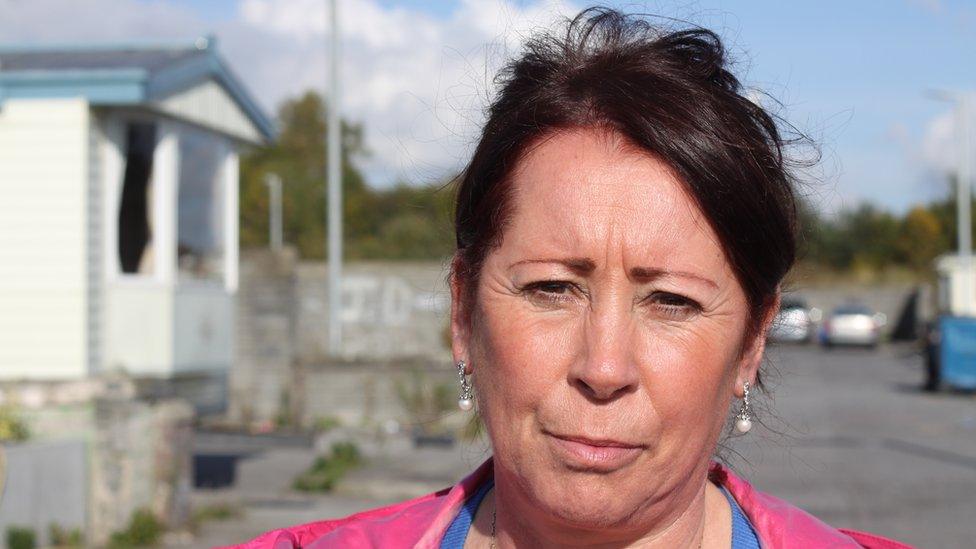
Mary Collins blames state inaction for poor living conditions
While the inside of the caravans are pristine, the scene outside is bleak and grim.
Children play in potholes and jump along the tops of concrete barriers: a horse painted on a wall by council workmen defines a play area, pointed out with derision by their parents.
'This is 2015'
Residents say the site, beside a wasteland, is infested with rats at night. This means children are under virtual curfew while adults encounter vermin if they leave their caravans in the dark.
"These children here become ill because of the rats. The children drop sweets or things on the ground and then pick them up and they get sick," says Maggie McDonagh.
"This is 2015, not the 1950s."

Maggie McDonagh, pictured with her granddaughters Shania McDonagh (left) and Savannah O'Donnell, is concerned about the conditions children play in
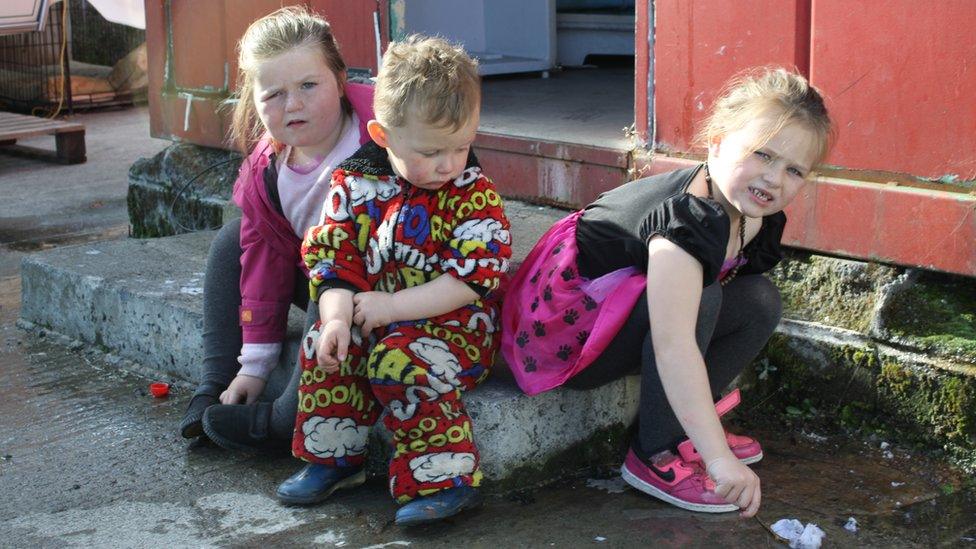
Residents say children living in St Mary's become ill as a result of the poor conditions
Residents registered with Fingal County Council pay to live on the site, as well as for water and electricity services.
The local authority says it has spent money on St Mary's and has had "extensive dialogue" with residents over the past two years, but said that some are living there illegally.
The council also blames vandalism on previous residents involved in feuding, saying staff have had to leave the site at times.
Residents meanwhile accuse the council of ignoring them.
Decreased funding
An accommodation crisis in Dublin with a shortage of rented properties has increased overcrowding, prompting safety concerns.
Strewn across the St Mary's site are domestic live electrical cables and makeshift DIY electrical connections to some mobile homes.
The charred wreckage of a caravan is evidence of previous fires, which residents say are frequent.
Ireland's 2008 economic crash and ensuing austerity policies have brought hard times nationally, but the traveller community has been hit particularly hard: government funding for traveller accommodation has been slashed by almost 90% from €35m ($39m; £25m) in 2009 to €4.3m this year.
Fifteen of Ireland's 31 local authorities that have a responsibility for traveller accommodation plan to spend nothing on it in 2015: 11 spent nothing last year despite funding being available.
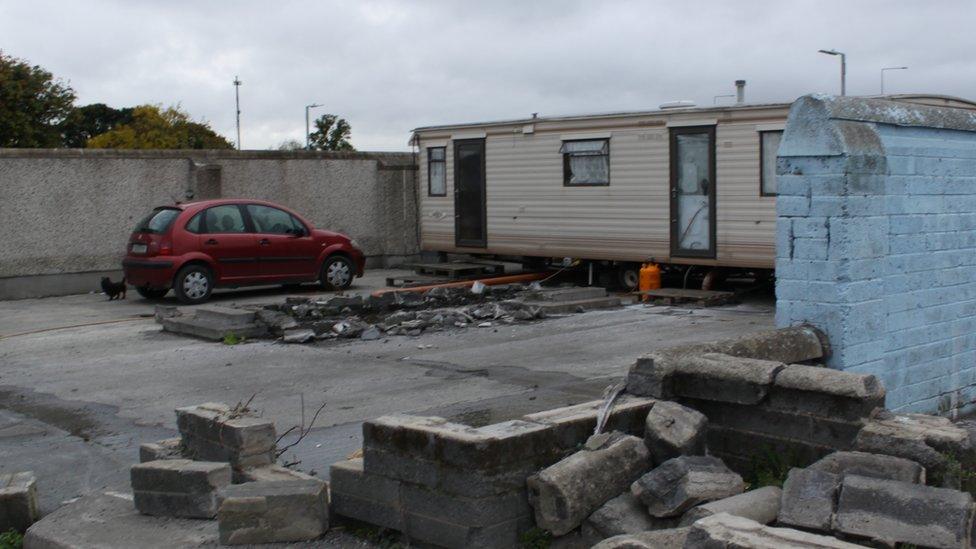
Funding to traveller accommodation in Ireland has been slashed
Local opposition has sometimes blocked travellers from moving into areas.
The surviving families from the site of the fire tragedy in Dublin were unable to occupy alternative emergency accommodation provided by another council because some residents in the middle-class suburb blocked access with cars, saying the site was unsuitable.
The council abandoned the plan, instead housing the travellers in mobile homes on land near a former dump, before more permanent accommodation could be found.
But mobile homes do not have to conform to the same fire safety standards and building regulations as permanent houses.
Stigmatisation
The tragedy has brought renewed focus on the wider difficulties faced by many of Ireland's traveller community.
Studies by Pavee Point suggest that male travellers have suicide rates seven times that of men in a settled community, with the rate for traveller women six times greater.
The group also says that life expectancy rates are around 15 years lower for male travellers, similar to rates in the 1940s for the general population in Ireland.
Some believe that poverty and lack of accommodation perpetuates stigmatisation.
"The settled people are only looking down on us because of the conditions we're living under," says Anne O'Donnell who has lived at St Mary's for 24 years.
"And that is truly down to the government... not putting the money into traveller accommodation budgets."

Government officials say the numbers of people living in halting sites like St Mary's are falling
Ireland's Housing Minister Paudie Coffey told Irish radio RTE that despite funding cuts, there have been improvements in recent years.
The numbers living in halting sites - areas with mobile homes and caravans like St Mary's - are falling, he said: in 2009 25% of travellers lived in halting sites but that had fallen to 4% in 2014.
Ireland's leader Enda Kenny attended the funerals of five of the victims of this month's fire.
But while he was welcomed there, anger within the traveller community remains intense over the tragedy. Its leaders are determined to win improvements in conditions for their people.
"The way it is with the government, they are ashamed of the travellers but no, they shouldn't be: they should be ashamed of themselves," says Mary Collins.
- Published10 October 2015
